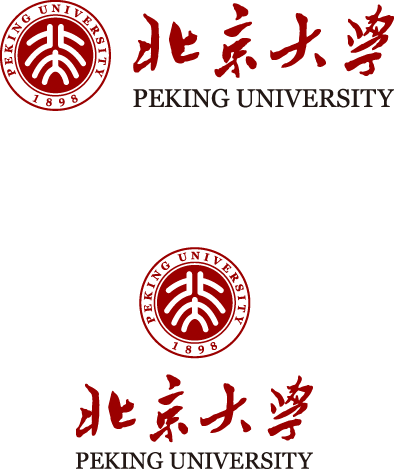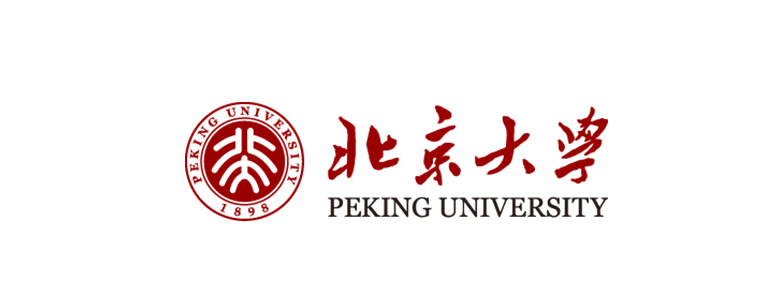Peking University

Founded in 1898, Peking University was first named as Beijing Normal University Hall. It was the first national comprehensive university in China and the highest educational administrative organ at that time. After the 1911 Revolution, it was renamed in 1912.
As the center of the New Culture Movement and the origin of the May 4th Movement, the birthplace of the earliest dissemination of Marxist and democratic scientific ideas in China, and the earliest activity base of the Communist Party of China, Peking University has made irreplaceable contributions to the revitalization and liberation of the nation, the construction and development of the country, and the civilization and progress of society. The contribution of generations has played an important pioneer role in the process of China's modernization. The traditional spirit of patriotism, progress, democracy and science and the style of study of diligence, rigorousness, realism and innovation are alive and well here and handed down from generation to generation.
In 1917, Cai Yuanpei, a famous educator, became president of Peking University. He carried out effective reforms on Peking University and promoted ideological emancipation and academic prosperity by following the principle of freedom of thought and taking inclusiveness. Chen Duxiu, Li Dazhao, Mao Zedong, Lu Xun, Hu Shi and a number of other outstanding talents have served or taught in Peking University.
After the Lugouqiao Incident in 1937, Peking University, Tsinghua University and Nankai University moved south to Changsha to form Changsha Provisional University. Shortly afterwards, the temporary University moved to Kunming, renamed the National Southwest United University. After the victory of the War of Resistance Against Japan, Peking University resumed its studies in Peking in October 1946.
After the founding of the People's Republic of China, colleges and departments were adjusted in 1952. Peking University became a comprehensive university focusing on basic teaching and research of Arts and sciences, and trained a large number of talents for the country. According to incomplete statistics, there are more than 400 academicians and faculty members in Peking University. A considerable number of influential people in the field of Humanities and Social Sciences in China are also from Peking University.
Since the reform and opening up, Peking University has entered a new period of unprecedented development and construction, and has become one of the two key universities in the national "211 Project".
On May 4, 1998, on the occasion of the centennial celebration of Peking University, President Jiang Zemin delivered a speech at the Congress celebrating the centennial of Peking University's founding. He issued the call that "in order to realize modernization, China should have some first-class universities with advanced world level". With the support of the state, Peking University launched the "Plan to Create a World-class University" in time. Since then, the history of Peking University has opened a new page.
On April 3, 2000, Peking University merged with the former Peking Medical University to form a new Peking University. The former Beijing Medical University was founded on October 26, 1912 as the predecessor of the National Beijing Medical College. In the 1930s and 1940s, the school was once called the Medical College of Peking University, and was incorporated into Peking University in July 1946. In 1952, during the adjustment of colleges and departments in national universities, Peking University Medical College separated from Peking University and became independent of Peking Medical College. In 1985, it was renamed Beijing Medical University. In 1996, it became the first medical university supported by the "211 Project" in China. The merger of the two universities has further broadened the discipline structure of Peking University, laid the foundation for promoting the integration of medicine, humanities, Social Sciences and science, and reforming medical education.
In recent years, with the support of "211 Project" and "985 Project", Peking University has entered a new stage of historical development. It has made remarkable achievements in discipline construction, personnel training, faculty building, teaching and scientific research, and laid a solid foundation for building Peking University into a world-class university. Today, Peking University has become the cradle of cultivating high-quality and creative talents, an important base for scientific research and knowledge innovation, and an important bridge and window for international exchanges.


-
1.Changchun Movie Wonderland
Changchun Movie Wonderland, located in Nanguan District, Changchun City, Jilin Province, was founded in 2003. It is a comprehensive tourist area integrating science and technology
Time 2018-12-05 -
2.Funiu Mountain Skiing Resort
Located on the north slope of the old boundary ridge of Funiu Mountain in Luanchuan County, Luoyang Funiu Mountain Skiing Resort has the highest elevation of 2200 meters and an elevation of 1700 meter
Time 2018-12-22 -
3.Jizu Mountain Scenic Spot in Binchuan
Jizu Mountain is located in a cave-making area about 20 kilometers west of Binchuan County, Yunnan Province, 90 kilometers away from Dali City. It is named for its three peaks in the front and a ridge
Time 2019-01-03 -
4.Tibetan Layi
Tibetans are divided into three major dialect areas: Weizang, Kangba and Anduo, which form three areas with cultural characteristics combined with topography.
Time 2019-04-10 -
5.Shandong drum
In addition to the book drum, the musical instruments of Shandong drum were initially beaten with two pieces of plough and plough, and then two pieces of iron and copper were used, accompanied by thre
Time 2019-06-13 -
6.Ceramic microbooks
Ceramic micro-calligraphy is one of the folk skills which perfectly combines Chinese calligraphy art with color porcelain art. It has a long history. Artists not only maintain the traditional style, b
Time 2019-06-18 -
7.Production Techniques of Wufangzhai Zongzi
The traditional production techniques of Wufangzhai zongzi are mainly divided into 36 processes, such as material selection, rice dipping, leaf boiling, stuffing, shelling, wrapping, thread binding an
Time 2019-06-29 -
8.Chord cavity
Based on Pingli dialect in Ankang City, Shaanxi Province, there are 13 singing patterns, including 8 commonly used tunes, 18 suona tunes and 30 gongs and drums. Pingli string is a complete set of loca
Time 2019-07-03 -
9.Make a chant
Bamboo and hemp trumpet is a traditional folk song of Qionglai City, Sichuan Province. It belongs to a kind of labor trumpet sung by local papermaking workers when playing bamboo and hemp. It is mainl
Time 2019-08-03 -
10.Communication University Of China
Communication University of China ( Communication University of China Referred to as "Zhong Chuan", located in the capital city. Beijing Yes. Ministry of Education of the People's Republic o
Time 2019-12-03 -
11.Neijiang in yuan Ming and Qing Dynasties
In 1279, China was unified and the Yuan Empire was established. After more than 30 years of war between the end of Song Dynasty and the beginning of Yuan Dynasty, the system of Zizhou and Puzhou has not been restored except Jianzhou. In the 22nd
Time 2020-12-16 -
12.guangan medical and health work
As of 2019, there are 3443 health institutions in Guang'an City. Among them, there are 79 hospitals, 174 health centers, 24 community health service centers (stations), 379 clinics, clinics and clinics, 2 blood collection and supply institutions, 7 matern
Time 2020-12-19
